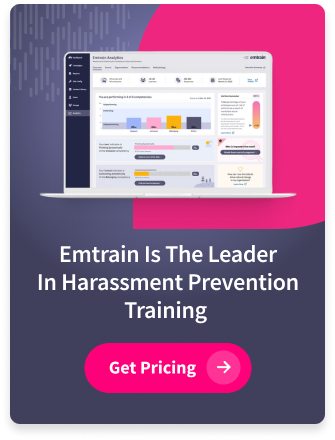Turning Corporate Values Into Employee Skills
For decades, businesses have promoted their corporate values – on websites, public filings and corporate policies – as rules to follow. Compliance training was then used to teach people the rules and policies that govern employee behavior and get employee acknowledgments (and proof) that people knew “the rules” – primarily for risk management purposes.
Unfortunately – the body of research over the last 10 years shows that compliance training DOES NOT WORK (see footnote below). Even so, lawmakers keep passing laws mandating compliance training and employers keep spending time and money sponsoring it. And it’s become such a performative exercise that no one even correlates the training programs with good or bad workforce outcomes.
What’s Missing
Here’s the problem with traditional compliance training; (1) it oversimplifies behavior into “rules” that don’t provide guidance in the vast majority of situations; (2) it’s never used to measure behavior or outcomes; and (3) it doesn’t generate any intrinsic motivation to complete. Let’s address the first problem of oversimplification. The most common (and most mandated) compliance topic is preventing harassment. The core “rule” in preventing harassment is to never say or do anything relating to any protected personal characteristic (gender, race, age, etc.) that is unwelcome to another person and that most people would also find unwelcome. That rule – by itself – doesn’t help guide behavior in the vast majority of employee conflicts. We have four generations working side by side, with many different cultural and life experiences. People have very different perspectives on what is or is not welcome (and respectful) and navigating those differences is not simple or easy. Second, compliance training doesn’t measure behavior or outcomes and you can’t change what you don’t measure, which means compliance training isn’t changing anything. Third, employees typically have no internal motivation to complete compliance training because it doesn’t provide guidance or change anything.
New Approach
Given our changing demographics and social values, it’s time to approach corporate values as essential job skills to measure, develop and improve. So conducting annual training on respect and preventing harassment, managing unconscious bias, diversity and inclusion, code of conduct and similar topics reflecting the corporate values is an opportunity to unpack these topics into a number of measurable job skills that people can develop and use at work. And, by embedding surveys within the training content, you can start to identify and measure employee behaviors. Once you’ve measured employees’ behaviors, you have visibility into the strengths and weaknesses of the workforce skills that illustrate (or don’t illustrate) your corporate values. With a workforce heatmap of values based skills, HR and talent leaders can proactively target those leaders and team members who need more development and track year over year the change in workforce outcomes due to the increase in skills (and manifesting corporate values).
(Footnote): See Why Diversity Programs Fail by Frank Dobbin and the 2016 EEOC Select Task Force on Sexual Harassment in the Workplace.
Emtrain is designed to help you measure and improve your work culture, click here for more information about Emtrain’s Solution. Learn from our experts and get a free personalized demo of Emtrain’s eLearning and data-driven solutions.








